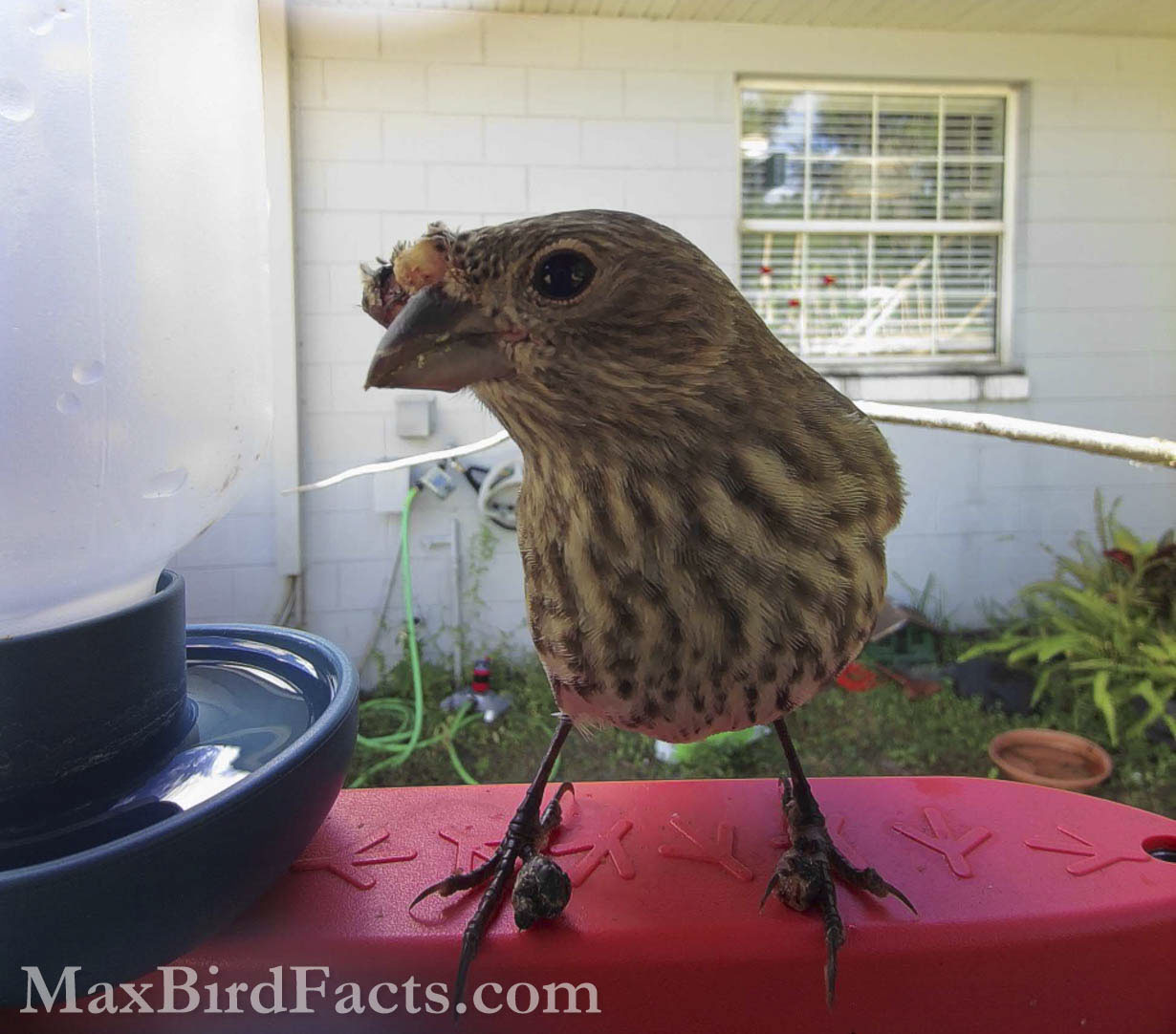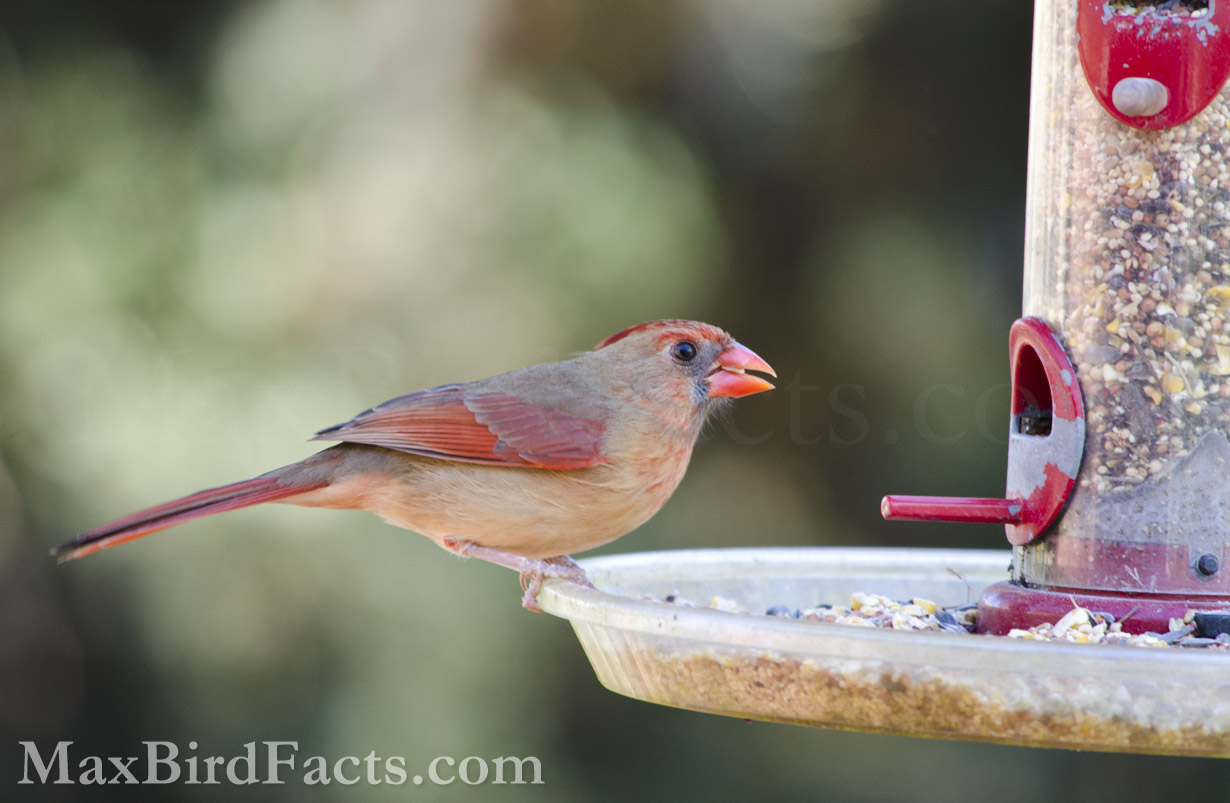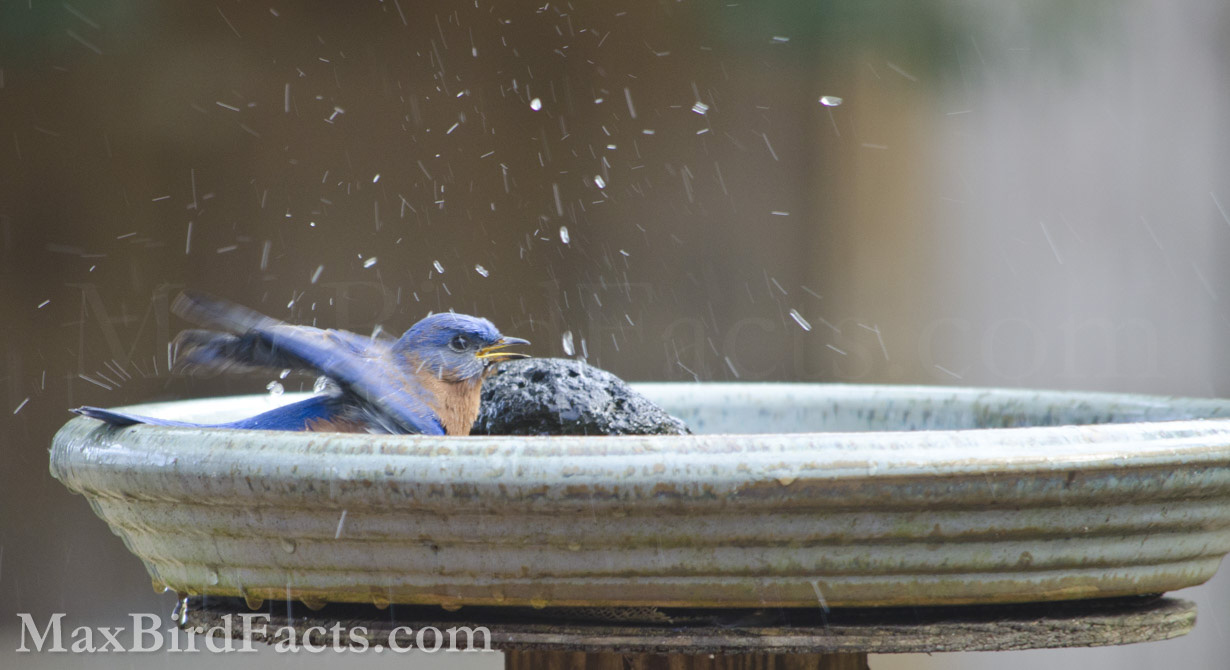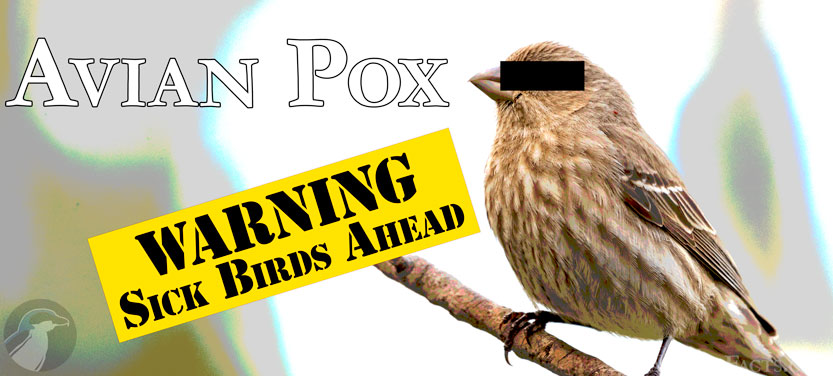This article stems from an unfortunate recent visitor to my bird feeders. A few weeks ago, my Bird Buddy smart feeder captured a female House Finch (Haemorhous mexicanus) with extreme signs of avian pox, or avipoxvirus.
Before we get further into this article, I want to warn you that there are images of birds with this disease that might be disturbing to some readers.
If you are one of those who doesn’t like to see content of sick animals, I completely understand and hope you go and read some of my other content.
This article will also have far fewer images than my other works.
Thankfully, I haven’t seen many birds with avian pox. But even if I did, I don’t think it is necessary for many visual examples of this disease.
Still, I feel it’s vital to show this and explain the importance of preventing the spread of avian pox when a sick bird visits your feeder.
So, if you’re still with me and want to learn more about what avian pox is and how to fight it, let’s dive in.
What is Avian Pox (Avipoxvirus)
Avian pox is a viral disease that causes wart or tumor-like growths on the featherless skin of birds. These growths can impair the bird’s vision, breathing, and feeding ability.

Avipoxvirus is highly contagious and spreads through a myriad of ways. One of the most common is an infected bird contaminating a surface and spreading the virus onto a bird feeder or bath.
Infection also spreads through mosquitos. This transmission is typically from the mosquito ingesting infected blood and harboring the virus. Avian pox virus can survive inside a mosquito for up to 30 days.
Around 240 avian species can contract avian pox, with ten unique strands to infect specific groups of birds. In North America, the groups that tend to contract pox the most are finches, sparrows, doves, pigeons, turkeys, and birds of prey.
Signs of avian pox can range from superficial tissue damage to extreme lesions on the mucus membrane of the mouth and throat. The most common areas to see these growths are around the base of the beak, exposed skin around the eyes and face, and on the legs and feet.
There are two primary types of avian pox: cutaneous and diphtheritic.
Cutaneous, or dry pox, are the more apparent tumor-like growths on bare parts of the bird. Dry pox is usually not life-threatening to the bird, and it will recover in around two to four weeks, resulting in scar tissue in previously infected areas.
Diphtheritic, or wet pox, is much more severe, causing growths in the bird’s mouth, trachea, and lungs. These scabs can make eating and breathing difficult for the infected bird and usually result in the victim suffocating or starving to death.
Because this is a viral disease, the genetic information of the illness integrates with the bird’s DNA, so future stresses could cause its avipoxvirus to flare up after its first case ends.
Treatment is possible for birds infected with avian pox, though this is difficult for wild birds. Vitamine A and C supplements can benefit skin regrowth and therapy, and antiviral and antibacterial medicine can help reduce the effects of the disease.
Unfortunately, these treatments are usually options for domestic birds, such as pet parrots or chickens, not wild species. Trying to capture an infected wild bird might cause it more harm than good, increasing stress levels and, in turn, increasing the virus’s hold on the bird.
What to do if a Bird with Avian Pox is at your Bird Feeder
If you see a bird with signs of avian pox, you must take down your feeders immediately. You’ll need to keep your backyard birding station down for 1-4 weeks while nature takes its course.
As we discussed earlier, this virus is highly contagious and can spread to all of our typical backyard bird species. It might be frustrating to miss a few weeks of seeing birds enjoying your feeders, but ensuring they stay healthy is far more critical.

The most troubling thing about avian pox is there isn’t a simple answer to where it originated. Unlike bacterial, fungal, or parasitic diseases that can stem from a lack of maintaining feeder cleanliness, avian pox seemingly rears its head out of nowhere.
Even if you keep your feeding stations clean and healthy for visitors, an infected bird might randomly stumble upon it. Another way you might have a bird infected with pox at your feeder is from infection via mosquito.
So, don’t feel bad if you have an infected bird at your feeder. Take the steps to prevent the spread to other birds, and your feeders will be up and running again in a few weeks.
How to Clean Bird Feeders
Use a solution of 10% bleach to 90% water and thoroughly clean all areas of your feeders and baths. If you see the infected bird return, clean it again.
Leave your feeders down for 1-4 weeks, and when you reactivate your birding station, give it another cleaning just in case an infected bird visited while you weren’t watching.
I can’t stress how important it is to properly clean your feeders if a bird with avian pox arrives. Here’s how I tend my bird feeders:
In a 5-gallon bucket, I make an initial bath of warm, soapy water to clean my feeders. I use a stiff-bristled scouring brush to scrub off droppings, mold, or old seed clinging to the feeder and an old toothbrush for any hard-to-reach corners.
After scrubbing the feeders, I soak them in the bleach solution for ten minutes to ensure any remaining viruses or bacteria are thoroughly killed.
For simple terms, 1 quart of bleach (32 fluid ounces) goes in for every 9 quarts of water. In metric, a simple measurement would be 1 liter of bleach for every 9 liters of water. Use this 1 part bleach to 9 parts water for whatever scale you need when making this solution.

After soaking in the bleach solution, thoroughly rinse your feeders with clean water. I hose my feeders down until I can see there is no bleach left on it.
Once the feeders are rinsed, hang them in a sunny place to dry completely. This last step is crucial to preventing mold in your feeders. If you put feed in while the feeder is still damp, you might cause the feed to become moldy, and you could make your birds sick.
For bird baths, I follow this exact same process. If your bath is too large to fit into your cleaning vessel, simply make the soapy water and bleach solution inside the bath.
If you are making the cleaning solutions in the bird bath, make sure you get all of it cleaned out before refilling with water. Soap and bleach are toxic for birds to ingest, so ensure your baths are thoroughly rinsed out.
How to Prevent Avian Pox
As stated before, the root cause of an avian pox event isn’t easy to pinpoint.
You might have been unlucky and had an infected bird follow other birds to your feeder, or a mosquito could have transmitted the virus from a sick bird to one of your backyard visitors.
Either way, regularly cleaning your bird feeders and baths and preventing standing water from collecting for mosquito larvae can help prevent avian pox and other diseases.
Spreading out your feeders could also prevent diseases from spreading as quickly. If you have issues with birds overcrowding feeders, consider setting up another shepherd’s hook so they can distribute more evenly.
Even though we can’t necessarily prevent the cause of avian pox, we can stop the spread of it by cleaning and deactivating our feeders when an infected bird comes.
How often should you Clean Bird Feeders?
Even if you don’t see signs of avian pox in your backyard birds, you should clean your feeders every 30 days.
Though the cause of pox is rarely known, routine cleanings can help prevent it and other diseases from festering on your feeders. Insects and parasites might also have infested your feeding stations, so a thorough cleaning can also help remove these.
Fungus is also a significant issue here in more temperate zones, so routine cleanings help fight these growths.
Cleaning bird baths and water features is vital to a healthy backyard birding station. Standing water can harbor all kinds of pathogens that will make your birds sick, let alone the chance for mosquito larvae.

Here in Florida, I tend to clean my bird baths every week, scrubbing out any built-up algae and mess left by birds and refreshing the water for them.
Keep an eye on the status of your feeders as well; you might find you need to clean them more frequently than every 30 days. If there were heavy rains for a few days, this could increase the chances of mold or fungal growth, so be mindful of how your feeders are looking.
Again, use this same soapy water scrub, 10% bleach solution soak, and clean water rinse to clean your feeders and baths.
Is Avian Pox Contagious to Humans
No, avian pox is not contagious to humans.
However, due to the bleach solution, I still recommend wearing a mask, eye protection, and gloves while cleaning your feeders.
Avian pox is also not contagious to other mammals, so if you have a mammalian pet, you don’t need to worry about getting sick.
Now We Know How To Spot Avian Pox and Clean Bird Feeders!
This may not have been the most appealing article to read, but understanding this debilitating and lethal virus is vital to keeping the overall population of birds healthy.
Remember, as soon as you spot a bird that has signs of avian pox, take down your feeders and clean them.
Clean all your feeders and baths with a 10% bleach solution, and keep your feeders down for 1-4 weeks to prevent the spread of avian pox.
You might not be able to help that infected bird directly, but doing this simple action can prevent all of your other backyard birds from becoming infected.
One final thing: if you come upon a diseased bird, whether it’s in your yard or you find it on a trail birding, report it to your state authority.
Florida Fish and Wildlife Conservation Commission has a reporting page for submitting a diseased bird (https://app.myfwc.com/FWRI/AvianMortality/).
Documenting this information is vital to understanding avian diseases and how they spread and affect wild populations. Reach out to your local
On a lighter note, while your feeders are inactive for a few weeks, take this time to go birding and look for some new species! You could even use this break to restructure the arrangement of your feeder station.
Thank you for taking the time to read this article. If you have ideas or suggestions for topics you would like me to write about in the future, feel free to leave a comment below or email me!
If you enjoyed this article, please subscribe to my email list to be the first to know when I post new articles!
Get Outside & Happy Birding
Max
